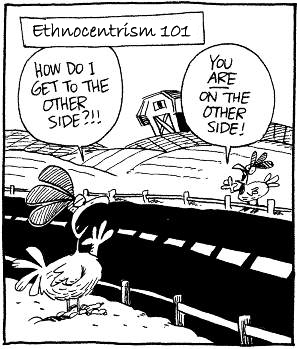 It seems that worship wars will never desist. They only move from one front to the next. Satan allows no cease-fire.
It seems that worship wars will never desist. They only move from one front to the next. Satan allows no cease-fire.
I was recently reading a post by Jamie Brown entitled, “Are We Headed For A Crash? Reflections On The Current State of Evangelical Worship.” Jamie had just returned from the National Worship Leader Conference, hosted by Worship Leader Magazine. In his article, he reflected on the state of worship, specifically regarding the role of worship leader.
He picked up on a theme that has been building in the church universal for a while now, which he referred to it as “performancism.” The worship leader as the performer. The congregation as the audience. The sanctuary as the concert hall.
I agree. It’s a worrisome thought and it’s something I’ve also seen growing in the past decade.
Where did it come from?
How did this tendency arise? That’s a tough question. I suppose the easiest answer is that anything God intended for good can be turned bad by the father of lies. I will be the first to admit that standing before hundreds of people to lead and direct their worship by using your own talents is fertile ground for the seed of pride to root and grow. It is something that all worship leaders must guard their heart against.
I also believe that the rise of worship music as a popular medium has also contributed to performancism. Before I get bashed here, let me first say that I love worship music and it’s an important part of my life. There’s nothing better than dialing up KLOVE or Air1 in the car. It’s meant to be uplifting and it is.
But again, anything good can be turned to bad with the wrong heart direction. In the early 2000’s, we saw the rise of Chris Tomlin, Lincoln Brewster and Michael W. Smith’s worship albums. There were others who shared in the same vein. This was quickly followed by “worship-oriented music” by Building 429, Casting Crowns, Jeremy Camp and others. Many of these songs were adopted into corporate worship, and rightfully so. The model of worship-minister-turned-professional-musician was born.
While I’m certain most, if not all, of these professionals you hear on the radio came into their international recognition with a good heart, great intentions and amazing results, it’s still easy to see how this would be enticing to the everyday worship leader who’s muddling away in the trenches on a weekly basis. The opportunity to be seen and heard on a larger scale is a desire for most musicians out there, and desire can easily become a temptation.
What should it be?
I need to stress that performance of Christian music is not bad in and of itself. I did it for 11 years all over the world. Still, there is a distinct difference in the performance of Christian music and the leading of corporate worship. I certainly believe that everything we offer God, especially in corporate worship, needs to be of the highest caliber. I am a big devotee of Willow Creek and their approach to the quality of worship arts, but there is much more to consider when leading worship than the presentation of good music and how good the “performance” may be.
Let me quote Jamie on this one:
“Sing songs people know (or can learn easily). Sing them in congregational keys. Sing and celebrate the power, glory, and salvation of God. Serve your congregation. Saturate them with the word of God. Get your face off the big screen. Use your original songs in extreme moderation. Err on the side of including as many people as possible in what’s going on. Keep the lights up. Stop talking so much. Don’t let loops/lights/visuals become your outlet for creativity at the expense of the centrality of the gospel. Point to Jesus. Don’t draw attention to yourself. Don’t sing songs with bad lyrics or weak theology. Tailor your worship leading, and the songs you pick, to include the largest cross-section of your congregation that you can. Lead pastorally.”
The leading of corporate worship is a high calling and one that should not be taken lightly. Our job is to point people to Christ. If that leads to a larger audience, then let the glory be to God. If not, you’re calling is already fulfilled.

 My last blog post,
My last blog post,  Manuel Luz is passionate about worship, coffee, the Oakland Raiders, and the intersections of faith and the arts. A songwriter, author, speaker, and creative arts pastor, Manuel’s first published book, Imagine That: Discovering Your Unique Role as a Christian Artist (Moody Publishers) is a practical and personal theology of the arts. Check out his blog, “Adventures in Faith and Art” (
Manuel Luz is passionate about worship, coffee, the Oakland Raiders, and the intersections of faith and the arts. A songwriter, author, speaker, and creative arts pastor, Manuel’s first published book, Imagine That: Discovering Your Unique Role as a Christian Artist (Moody Publishers) is a practical and personal theology of the arts. Check out his blog, “Adventures in Faith and Art” (

 By the way, we don’t have a corner on the market, though we are perhaps the worst. I learned while living in Brazil that God is a Brazilian.
By the way, we don’t have a corner on the market, though we are perhaps the worst. I learned while living in Brazil that God is a Brazilian. Even to this day, I still get comments about the song He Leadeth Me. This song was the title track to an early hymns album by Acappella and friends. The album was out of print for quite a while, although I think it has been reprinted and is available once again. What strikes most people when they hear the album is the diversity of styles present and the joy that permeates throughout. What very few know is that this album grew from a funeral.
Even to this day, I still get comments about the song He Leadeth Me. This song was the title track to an early hymns album by Acappella and friends. The album was out of print for quite a while, although I think it has been reprinted and is available once again. What strikes most people when they hear the album is the diversity of styles present and the joy that permeates throughout. What very few know is that this album grew from a funeral.


 George Pendergrass was part of the roundtable discussion at Acafest 2012 this past summer in Nashville, TN. He shared the floor with me, Duane Adams and Robert Guy… Acappella from 1992 to 1995 (I think that’s correct… I lose track).
George Pendergrass was part of the roundtable discussion at Acafest 2012 this past summer in Nashville, TN. He shared the floor with me, Duane Adams and Robert Guy… Acappella from 1992 to 1995 (I think that’s correct… I lose track). I suppose I’ve been looking at Stepcase Lifehack a bit too much… and playing Agent Dash too much. If you don’t know what
I suppose I’ve been looking at Stepcase Lifehack a bit too much… and playing Agent Dash too much. If you don’t know what 